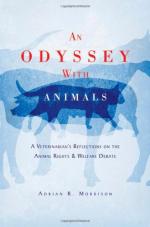|
This section contains 1,455 words (approx. 5 pages at 300 words per page) |

|
Although all the major moral philosophers in the Western tradition have had something to say about the moral status of animals, they have commented infrequently and for the most part only in brief. This tradition of neglect changed dramatically during the last quarter of the twentieth century, when dozens of works in ethical theory, hundreds of professional essays, and more than a score of academic conferences were devoted to the moral foundations of human treatment of nonhuman animals.
Two main alternatives—animal welfare and animal rights—have come to be recognized. Animal welfarists accept the permissibility of human use of nonhuman animals as a food source and in biomedical research, for example, provided such use is carried out humanely. Animal rightists, by contrast, deny the permissibility of such use, however humanely it is done.
Differ though they do, both positions have much...
|
This section contains 1,455 words (approx. 5 pages at 300 words per page) |

|


